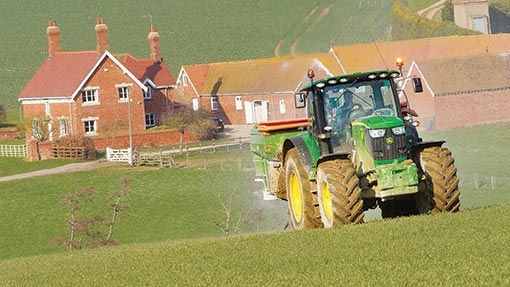Mixed picture for farms’ finances

The financial position of farming businesses was widely variable between sectors and farm size in the period of 2010-11 to 2012-13, according to recently released figures from Defra.
An analysis of the profitability and resilience of farms in England using data from the Defra Farm Business Survey, showed a wide range of borrowings, net worth and liabilities as a proportion of assets.
Ten percent of all farms had debts of £400,000 or more, needing regular income flows to pay the interest on the borrowing, while over a quarter had debts of less than £10,000.
Pig and poultry farms had the highest average debt at £280,000, on account of high costs such as housing and feed, while grazing livestock farms had the lowest at £54,000 for LFA and £67,000 for lowland areas.
More on this topic: Farm borrowing increases to a record £15.2bn
“There are some [farming businesses] with no liabilities and some with significant liabilities – but the key question to ask is whether those with debts can service them,” said Martin Redfearn, national agricultural policy manager at Barclays.
“Most can because otherwise banks would not have leant to them,” he said. Those with larger borrowings often tended to be businesses that were doing well and investing, said Mr Redfearn.
The gearing ratio, which measures debt as a proportion of the business’ assets, showed the majority of farms with a ratio below 50% – considered healthy according to Defra’s report.
About half of farms had a gearing ratio of less than 5%, which Defra said suggested that the majority of farms were financially viable over the long term.
However, businesses could have a low gearing and be struggling, while other could be thriving on a high gearing, said Mr Redfearn.
Generally farming tended to be relatively low geared compared to other industries, said Mr Redfearn, mainly due to the high level of assets, helped particularly by the value of land.
The average net worth across all farms stood at £1.2m, with about 40% of farmers having a net income of £1m or more. This indicated that these businesses were likely to be resilient to fluctuations in income, in the short term at least, said Defra.
Cereal and general cropping farms had the highest average net worth, at £1.6-1.7m, while horticulture, LFA grazing livestock and pig and poultry farms in contrast, had the lowest average net worth at £700,000.
“So far this year has been one of mixed fortunes but the important thing is to look at agriculture over a three- to five-year cycle – some years will be good and others will be bad.”
Arable farmers were faced with the likelihood of low prices not offset by higher yields, said Mr Redfearn. Meanwhile the picture was mixed for dairy farmers, but generally is was looking quite good while livestock farmers were still struggling with prices.
“Broadly speaking though, the agricultural industry is in good shape. There is mixed confidence as always, with some people temporarily subdued due to prices.”
However, farmers were likely to regain confidence and were in the meantime tending to pause and reflect on prices before making big investment decisions.
